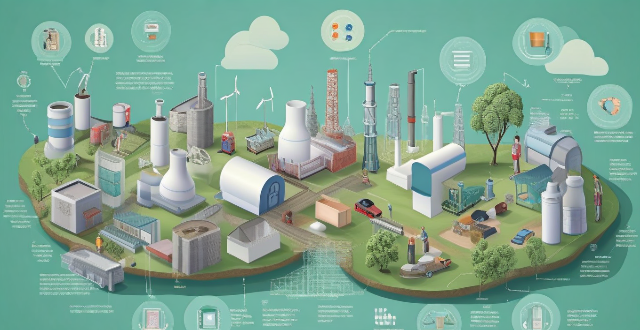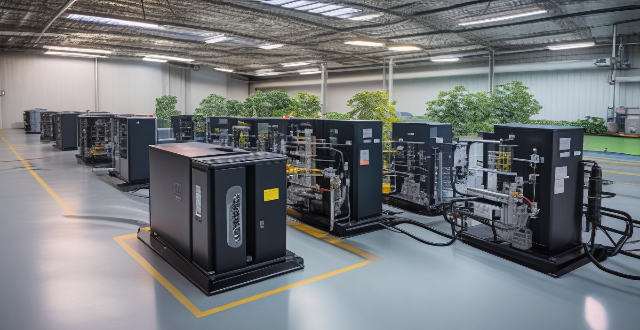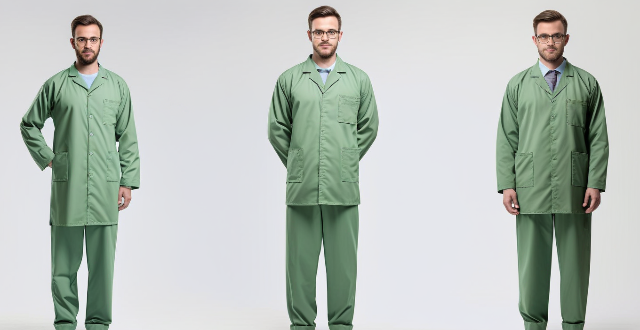Chemical Disposal

How do you properly dispose of chemicals to ensure safety and compliance with regulations ?
Proper disposal of chemicals is crucial for environmental and health safety. Identify the chemical, classify it as hazardous or non-hazardous, determine the appropriate disposal method, follow packaging and labeling guidelines, comply with regulations, consider alternative disposal methods, and train personnel on safety procedures to ensure safe and compliant disposal.

How can governments regulate the use and disposal of harmful chemicals ?
Governments can regulate the use and disposal of harmful chemicals through legislation, education and awareness programs, and enforcement and monitoring. Laws and regulations should cover all aspects of chemical management, including registration, labeling, restrictions on use, safe handling, waste management, and penalties for non-compliance. Public education campaigns and training programs can help businesses and consumers understand the risks associated with harmful chemicals and how to safely handle and dispose of them. Regular inspections and audits can ensure compliance with laws and regulations, identify potential hazards, and verify that proper safety measures are in place. Reporting and record-keeping requirements can also help government agencies monitor chemical management practices and ensure compliance with regulations.

What are the best practices for chemical protection in a laboratory setting ?
The text provides best practices for chemical protection in a laboratory setting, including wearing appropriate personal protective equipment, proper storage and handling of chemicals, using proper ventilation, having a spill response plan, disposing of waste properly, and staying informed and trained. These practices are crucial to ensure the safety of individuals working with hazardous chemicals in a lab environment.

In what scenarios is it necessary to use chemical protective measures in an industrial setting ?
Industrial settings often require chemical protective measures to ensure worker safety. These scenarios include handling hazardous chemicals, working in confined spaces, performing maintenance on chemical process equipment, disposing of hazardous waste, and emergency response to chemical incidents. Workers must wear appropriate personal protective equipment (PPE) such as gloves, aprons, goggles, and respiratory protection devices to prevent exposure to harmful chemicals. Examples of these scenarios include manufacturing processes involving strong acids or bases, tank cleaning in the petrochemical industry, repairing valves or pipes in chemical processing plants, disposal of chemical waste at landfill sites, and firefighting and rescue operations during chemical fires or explosions. By implementing these chemical protective measures in relevant industrial scenarios, employers can help safeguard their employees from potential health hazards associated with chemical exposure.

Are there any environmental concerns associated with the production and disposal of DC brushed motors ?
The article discusses the environmental concerns associated with DC brushed motors, including high energy consumption, material extraction and processing, manufacturing processes, and end-of-life disposal. It suggests potential solutions such as improved efficiency, sustainable material sourcing and processing, eco-friendly manufacturing practices, and responsible end-of-life management to mitigate their impact on the environment.

Are there any laws or regulations regarding electronic waste disposal in my country ?
Electronic waste disposal is a critical issue that involves environmental protection, resource recycling, and sustainable development. Many countries have enacted specific laws and regulations to manage the proper disposal of electronic waste, aiming to reduce its negative impact on the environment and promote responsible recycling practices. These include extended producer responsibility, bans on exporting hazardous waste to developing nations, mandatory recycling targets, and take-back programs. Additionally, local authorities may implement further regulations such as collection points, disposal fees, prohibitions on landfill disposal, and public awareness campaigns. Consumers play a vital role in ensuring e-waste is disposed of responsibly by researching local disposal options, utilizing take-back programs, donating or selling old devices, properly recycling unusable devices, and reducing purchases. Adhering to these laws and regulations and following best practices contributes significantly to reducing the impact of e-waste on our planet.

What are some common causes of a broken garbage disposal and how can I fix it ?
Garbage disposals can break down due to various reasons, including overloading the disposal with too much food waste, putting hard objects such as bones or glass into the disposal, running the disposal without enough water, and putting grease or oil into the disposal. To fix a broken garbage disposal, unplug it from the power source, check for obstructions, check the blades and motor, and if necessary, call a professional plumber.

Can protective clothing be reused after being exposed to chemicals or biological agents ?
The reusability of protective clothing after exposure to chemicals or biological agents is determined by factors such as the type of garment, nature of contaminants, and level of exposure. Potential risks include inadequate decontamination, material degradation, and cross-contamination. Best practices for handling and disposal involve immediate removal, proper storage, appropriate decontamination processes, and safe disposal methods like incineration or landfill disposal according to local regulations. Adherence to these practices is crucial for maintaining safety and preventing further contamination.

How do flow batteries compare to traditional chemical batteries ?
Flow batteries and traditional chemical batteries are both used for energy storage, but differ in aspects such as energy storage mechanism, power and energy density, lifespan and maintenance, and cost and scalability. Traditional chemical batteries store energy through chemical reactions within cells and have a fixed capacity, while flow batteries use external tanks of electrolyte solutions and have adjustable capacity. Traditional chemical batteries can deliver high power output per unit weight or volume and have moderate energy density, while flow batteries typically have lower power density but higher energy density. Traditional chemical batteries have a limited number of charge and discharge cycles before performance degrades and require regular maintenance, while flow batteries can undergo a larger number of cycles without significant degradation and require less maintenance. Traditional chemical batteries often have higher upfront costs and limited scalability, while flow batteries generally have lower upfront costs and offer more flexibility in scaling up. The choice between the two depends on the specific requirements of the energy storage application.

How do hazmat suits provide protection against chemical exposure ?
Hazmat suits, also known as chemical protective clothing or chemical resistant suits, are specialized garments designed to protect wearers from hazardous materials. These suits offer a high level of protection against chemical exposure by creating a barrier between the wearer and the environment. The key features of hazmat suits include their material, design, breathability, and comfort. The article discusses how hazmat suits provide protection against chemical exposure in detail, including the levels of protection offered by different types of suits.

How can we manage and dispose of hazardous chemical waste in an environmentally friendly manner ?
The provided text discusses the importance of managing and disposing of hazardous chemical waste in an environmentally friendly manner. It outlines steps for identifying and classifying hazardous waste, proper storage and handling, safe transportation, treatment and disposal options, regulatory compliance, best practices for minimizing waste, and employee training and awareness. These guidelines help organizations effectively manage and dispose of hazardous chemical waste while complying with legal requirements and protecting public health and the environment.

How does PPE protect against chemical exposure in industrial settings ?
In industrial environments, workers are often exposed to hazardous chemicals that can pose significant health risks. Personal Protective Equipment (PPE) plays a crucial role in safeguarding these workers from potential harm. This article delves into the various types of PPE and how they protect against chemical exposure. Types of PPE for Chemical Protection include respiratory protection such as filtering facepiece respirators, powered air-purifying respirators, and self-contained breathing apparatuses; skin and eye protection like chemical-resistant gloves, aprons and suits, and goggles and face shields; and foot protection like chemical-resistant boots. PPE works against chemicals by forming a physical barrier between the worker and the chemical, absorbing or adsorbing chemicals before they reach the user, and isolating the user completely from the external environment. Best practices for using PPE include ensuring proper fit and comfort, regular inspection and maintenance, and comprehensive training and education on how to use PPE effectively. The correct use of PPE is essential for the safety of workers in industries where chemical exposure is a risk. Employers must ensure that appropriate PPE is provided, maintained, and used correctly to create a safer work environment.

How often should chemical protective gear be replaced or maintained ?
Chemical protective gear is essential for workers exposed to hazardous chemicals. The frequency of replacement or maintenance depends on the type of gear, level of exposure, and manufacturer's recommendations. Regular visual inspections and testing are crucial to ensure that the gear remains effective and safe. By following the manufacturer's guidelines, workers can minimize their risk of exposure to hazardous chemicals and protect their health and well-being.

Can you explain the different levels of chemical resistance in protective clothing ?
Chemical resistance is a crucial aspect of protective clothing, especially for those working in hazardous environments. The level of chemical resistance required depends on the type and concentration of chemicals present in the work area. Here, we will discuss the different levels of chemical resistance in protective clothing: 1. Level A: Highest Level of Protection 2. Level B: Intermediate Level of Protection 3. Level C: Lower Level of Protection 4. Level D: Basic Protection

Are there any environmental concerns with the disposal of zinc-carbon batteries ?
Zinc-carbon batteries, widely used in everyday devices, pose significant environmental concerns due to the presence of hazardous materials and disposal challenges. To mitigate these concerns, it is recommended to educate the public, improve recycling infrastructure, and support research and development of alternative battery technologies.

How can individuals contribute to the safe management of hazardous chemicals in their community ?
The article outlines various ways individuals can contribute to the safe management of hazardous chemicals in their community. It emphasizes the importance of education, staying informed, taking action, prevention and preparedness, and community collaboration. Individuals are encouraged to research common hazardous chemicals, identify potential health effects, monitor local news, attend public meetings, report leaks and spills, support strict regulations, participate in cleanup efforts, implement safe practices at home, create an emergency plan, build partnerships, and encourage transparency. By taking these steps, individuals can play a crucial role in ensuring the safe management of hazardous chemicals within their communities.

What is the role of respirators in chemical protection, and how are they classified ?
Respirators play a crucial role in chemical protection by filtering out harmful particles and chemicals from the air. They are designed to protect workers from inhaling toxic substances, such as gases, vapors, and particulate matter, that may be present in their work environment. Respirators are essential for ensuring worker safety and preventing respiratory diseases caused by exposure to hazardous chemicals. Respirators can be classified into two main categories based on their design and function: air-purifying respirators (APRs) and atmosphere-supplying respirators (ASRs). APRs remove contaminants from the air before it is inhaled, while ASRs provide clean air from an external source through a hose or pipeline. When selecting a respirator for chemical protection, several factors must be considered, including the type of hazard, level of protection required, fit and comfort, and maintenance and care. By understanding the different types of respirators and selecting the appropriate one based on the specific hazard, employers can help ensure the safety and health of their employees.

What is the importance of understanding material safety data sheets (MSDS) in chemical handling and protection ?
The text discusses the importance of understanding Material Safety Data Sheets (MSDS) in chemical handling and protection. It explains what an MSDS is, its significance for health and safety, compliance with regulations, environmental protection, and risk management. The article emphasizes that understanding MSDS is crucial for workers and employers to ensure a safe and healthy work environment.

How does one properly dispose of used PPE ?
Proper disposal of used PPE is crucial for hygiene and disease prevention. The guide outlines steps including decontamination, careful removal, designated waste container disposal, hand hygiene, and safe waste management. Different types of PPE require specific disposal methods, such as gloves, masks/respirators, gowns, and face shields. Important precautions include following manufacturer and local health authority guidelines, double-bagging if required, avoiding reuse of single-use items, and informing staff through training and signage. Proper PPE disposal helps prevent cross-contamination and protects individuals and the environment.

What safety precautions should be taken while working with a speed controller ?
Working with a speed controller can be dangerous if proper safety precautions are not taken. Here are some important safety measures to consider: ## General Safety Tips - Always wear appropriate personal protective equipment (PPE) such as gloves, safety glasses, and hearing protection when working with a speed controller. - Ensure that the work area is well-lit and free from any tripping or slipping hazards. - Keep all tools and materials organized and stored safely to prevent accidents. - Be aware of your surroundings and any potential hazards that may exist in the work environment. ## Electrical Safety - Disconnect power to the speed controller before performing any maintenance or repairs. - Use insulated tools when working on electrical components. - Avoid touching exposed wires or terminals with bare hands. - Do not work on a speed controller if you are standing on a damp or wet surface. ## Mechanical Safety - Use appropriate lockout/tagout procedures to prevent accidental startup of machinery during maintenance or repair. - Ensure that guards and shields are in place and functioning properly. - Be cautious around moving parts and avoid reaching across or under moving machinery. - Use caution when handling heavy objects to avoid straining muscles or causing injury. ## Chemical Safety - If chemicals are used in conjunction with the speed controller, ensure proper ventilation is provided. - Store chemicals in their original containers and keep them away from heat sources or open flames. - Follow all manufacturer instructions for handling and disposal of chemicals.

What are the different types of fire extinguishers ?
This text provides a comprehensive guide to the various types of fire extinguishers available, each designed for specific classes of fire. It includes detailed descriptions and pros & cons of water, foam, carbon dioxide (CO2), dry chemical, wet chemical, pre-action wet chemical, and clean agent fire extinguishers, emphasizing their suitability for different types of fires such as class A, B, C, and K. The text concludes by highlighting the importance of choosing the right type of extinguisher based on potential fire hazards in one's environment.

How do I dispose of an expired or damaged fire extinguisher ?
Disposing of an expired or damaged fire extinguisher is a crucial step in maintaining safety and complying with regulations. Here's a detailed guide on how to do it properly: 1. Check for Local Regulations 2. Determine the Type of Fire Extinguisher 3. Wear Protective Gear 4. Drain the Contents (If Applicable) 5. Proper Packaging 6. Transportation 7. Disposal Options 8. Record Keeping

How does one select the appropriate gloves for handling specific chemicals ?
When dealing with chemicals, it is crucial to choose the right gloves to protect your hands from potential harm. Here are some steps to help you select the appropriate gloves for handling specific chemicals: 1. Identify the type of chemical you will be working with, such as acids, bases, solvents, and oxidizers. 2. Determine the level of protection needed by consulting a material safety data sheet (MSDS) or a hazardous materials reference guide. 3. Choose the right glove material based on the level of protection needed, such as nitrile, latex, neoprene, butyl, or viton/teflon. 4. Consider other factors such as size, fit, thickness, texture, and cuff style when selecting gloves. 5. Test the gloves before using them for handling specific chemicals to ensure they provide adequate protection. By following these steps, you can select the appropriate gloves for handling specific chemicals and ensure your hands are protected from potential harm.

What types of chemicals require specialized personal protective equipment (PPE) ?
When working with hazardous chemicals, it is crucialWhen working with hazardous chemicals, it is crucial protective equipment (PPE) it is crucial to use the appropriate personal protective equipment (PPE) to ensure safety and prevent exposure. Here are some types of chemicals that require specialized PPE: Corrosive Chemicals: When handling corrosive chemicals, wear chemical-resistant gloves, aprons or gowns, safety goggles or face shields, and respiratory protection if necessary. Toxic Chemicals: When handling toxic chemicals, wear nitrile or chemical-resistant gloves, lab coats or coveralls, safety goggles or face shields, and respiratory protection depending on the type of toxic chemical. Flammable Chemicals: When handling flammable chemicals, wear flame-resistant clothing, gloves made from materials like nitrile or neoprene, safety goggles or face shields, and respiratory protection if necessary. Radioactive Chemicals: When handling radioactive chemicals, wear lead aprons or shields, gloves made from materials like latex or vinyl, safety goggles or face shields, and respiratory protection if necessary.

What are the different types of protective clothing available ?
Protective clothing is essential in various industries and environments to ensure the safety and well-being of individuals. It is designed to protect against hazards such as chemicals, biological agents, radiation, heat, cold, electrical shocks, and physical injuries. There are different types of protective clothing available, including chemical protective clothing, biological protective clothing, radiation protective clothing, thermal protective clothing, electrical protective clothing, and physical protective clothing. Each type of protective clothing is designed to protect against specific hazards and includes a range of garments and accessories.

How do zinc-carbon batteries work ?
Zinc-carbon batteries are primary, single-use batteries that generate electricity through a chemical reaction involving zinc and carbon. Their construction includes an anode of zinc, a cathode of manganese dioxide mixed with carbon, an electrolyte, a separator, and a container. When in use, zinc is oxidized at the anode, releasing electrons and zinc ions, while the cathode accepts electrons and reduces manganese dioxide. This flow of electrons creates an electrical current. Over time, the battery discharges as the materials are used up, requiring replacement. Proper disposal is crucial to prevent environmental pollution from their heavy metal components.

How do industrial processes contribute to greenhouse gas emissions ?
Industrial processes significantly contribute to greenhouse gas (GHG) emissions, which are a major driver of climate change. These contributions come from various sources including energy consumption, manufacturing processes, agricultural industries, construction industries, and waste management. Mitigation strategies such as improving energy efficiency, optimizing processes, implementing carbon capture and storage technologies, and enforcing policy and regulation can help reduce these emissions.